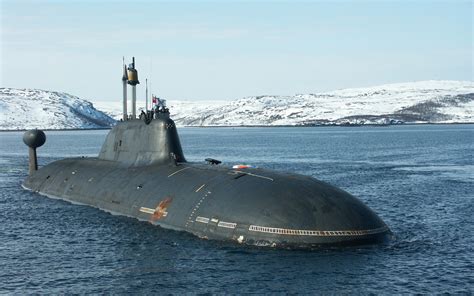真的吗?
And then what happened?
然后会发生什么?
That's great!
太好了!
Squeaks was just telling me about a story he was reading.
吱吱刚在在给我讲他正在读的一个故事。
It was about a submarine exploring the ocean!
关于潜水艇探索海洋的故事!
You want to go in a submarine, too?
你也想乘潜水艇去吗?
That sounds like it could be a lot of fun.
听起来很有趣。
Maybe someday we will visit a submarine!
也许有一天我们会去参观潜水艇!
Actually, a viewer named Sam sent us a question about submarines not too long ago.
事实上,一位名叫山姆的观众不久前给我们发了一个关于潜艇的问题。
Submarines are kind of like boats, except they go under the water.
潜水艇有点像船,只不过它们是在水下航行。
And Sam wanted to know more about how they do that!
山姆想知道他们是怎么做到的!
Squeaks does too.
吱吱也想知道。
Well, submarines work because of the way things sink and float, and some really smart thinking.
嗯,潜艇之所以能工作是因为它的漂浮和下沉方式,还有一些非常聪明的想法。
You probably know that when you put things in water, some of them float at the top, and some of them sink to the bottom.
你可能知道,当你把东西放入水中时,有些东西浮在顶部,有些沉到底部。
We did an experiment to learn why things float or sink with our friends Bill and Webb.
我们和朋友比尔和韦伯做了一个实验来了解为什么东西会浮或沉。
Do you remember that, Squeaks?
吱吱,你还记得吗?
We learned that whether something floats depends on its density, or how heavy it is for its size.
我们知道东西漂浮是取决于它的密度,或取决于它的大小。
If it's heavier for its size than water, it sinks.
如果它比水重,它会下沉。
If it's lighter, it floats.
如果它更轻,它就会浮起来。
For example, a plastic spoon isn't very heavy for its size, so it floats.
例如,塑料勺的大小不是很重,所以它可以漂浮。
But a metal spoon is pretty heavy for its size, so it sinks.
但是,就其大小而言,金属汤匙相当重,所以它会下沉。
That's how boats float, too.
船也是这样漂浮的。
They're really heavy — you wouldn't be able to just pick one up!
它们真的很重——你不可能只捡到一个!
But they're not actually very heavy compared to how big they are.
但是和它们的大小相比,它们实际上并不重。
They're not very dense, so they float!
它们不是很密集,所以可以漂浮!
And submarines can float on top of the water for the same reason.
同样的道理,潜艇也可以浮在水面上。

But for a submarine to be able to go under the water, it needs some of that really smart thinking I mentioned earlier.
但是要让潜水艇能够潜入水下,它需要一些我之前提到过的聪明的想法。
To dive into the water, a submarine needs to become heavier for its size — it needs to be more dense.
为了潜入水中,潜水艇需要变得更重,因为它的大小,它需要更密集。
But it's not so easy to make something heavier when you're in the middle of the ocean!
但是当你在海洋中央的时候,做一些更重的东西并不容易!
That's why submarines have big tanks, called ballast tanks.
这就是为什么潜艇有大的坦克,叫做压载坦克。
When it's time for the submarine to dive down, the ballast tanks open so they fill up with water.
当潜艇下潜的时候,压载舱就会打开,这样它们就装满了水。
Adding the weight of the water to the submarine makes it dense enough to sink.
把水的重量加到潜艇上,使它的密度足以沉没。
You can see how this works if you have an empty plastic bottle and a bowl of water.
如果你有一个空的塑料瓶和一碗水,你就能看到工作原理。
At first, if you put the bottle in the water, it will float because the only thing inside it is air.
首先,如果你把瓶子放在水里,它会浮起来,因为里面只有空气。
It's very light for its size, so it's not very dense.
它的体积很轻,所以密度不大。
But if you take the cap off and let the water in from the bowl, it will sink!
但是如果你把瓶盖从瓶子上取下来,让水从碗里流出来,它就会沉下去!
The water makes it heavier for its size, just like putting water into the ballast tanks on a submarine does.
就其大小而言,水使它变得更重,就像把水放入潜水艇的压载舱一样。
The rest of the submarine is very strong and sealed up tight, so water can't get in,
潜艇的其他部分非常坚固,密封紧密,所以水进不去,
and so that if there are people on the submarine, they can breathe.
所以如果潜艇上有人,他们就可以呼吸。
To make sure they don't run out of air, they bring along extra air that's all squeezed together inside a bottle,
为了确保它们不会耗尽空气,它们会带来额外的空气,这些空气都被挤在一个瓶子里,
like how you squeeze air into a bicycle tire when you pump it up.
就像你把空气挤进自行车轮胎一样。
And then they can go exploring under the water, just like the people in the story Squeaks was reading!
然后他们就可以去水下探险了,就像故事里的那些人一样。
In real life, we use submarines for all kinds of things, including learning more about the oceans.
在现实生活中,我们用潜水艇做各种各样的事情,包括更多地了解海洋。
When scientists send submarines under the water, they find so many cool animals.
当科学家把潜艇送到水下时,他们发现了很多很酷的动物。
There are jellyfish, octopuses, crabs, fish, and tons of animals we've never even seen before!
有水母、章鱼、螃蟹、鱼,还有很多我们从未见过的动物!
But after the submarine is done exploring under the water, there's one more thing it needs to be able to do.
但在潜艇完成水下探索后,它还需要做一件事。
Maybe you've already guessed what it is.
也许你已经猜到了。
We know how submarines dive under the water, but how do they get back up?
我们知道潜艇是如何潜入水下的,但它们是如何浮起来的呢?
Well, remember how submarines bring along extra air?
还记得潜艇是如何携带额外空气的吗?
If there are people on the submarine, they can use it to breathe, but it's not only for breathing.
如果有人在潜艇上,他们可以用它呼吸,但它不只是用来呼吸。
When it's time for the submarine to go back up to the surface, it pushes air into the ballast tanks, and water out.
当潜艇回到水面时,它将空气推进压载舱,水排出。
That makes the submarine lighter for its size, so it can float up to the top of the water!
这使得潜艇相对于自身大小更轻,所以它可以浮到水面上!
It really is a very smart way of using science to explore the world.
这是一种非常聪明的利用科学探索世界的方式。
Thanks for joining us!
感谢您的收看!
If you have more questions about submarines, or exploring the oceans, or anything at all, we have a website where you can send them to us!
如果你有更多问题是关于潜艇的,或关于探索海洋的,或任何东西,我们有一个网站,你可以发给我们!
Just ask a grown-up to help you go to patreon.com/scishowkids
to check it out.
让一个成年人帮你登录patreon.com/scishowkids来看看吧。
And if you are a grown-up, our Patreon page is also a place where you can support this show and help us making fun, educational videos
just like this one.
如果你是一个成年人,也可以来Patreon页面,来支持这个节目,帮助制造幽默,支持像这个节目这样的教育视频。
Thanks! We'll see you next time, here at the Fort!
谢谢!我们下期见!在堡垒不见不散!


